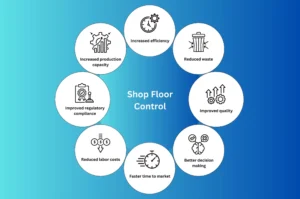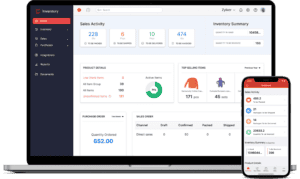Improve Inventory Control with Effective Batch Tracking
Batch tracking is essential for businesses dealing with perishable goods or those required to trace products for quality control and compliance.
Introduction:
Managing inventory is about more than just keeping products in stock; it’s about ensuring quality, compliance, and efficiency. Batch tracking allows businesses to trace products from suppliers to customers, ensuring accountability and reducing risk. This article explores the importance of batch tracking, how to implement it, and the best tools to simplify the process.
What is Batch Tracking?
Batch tracking refers to monitoring groups of products or materials that share the same production or procurement lot. This system enables businesses to track inventory through its lifecycle, from supplier to warehouse and ultimately to the customer. Batch numbers help with tracing products in case of recalls, compliance audits, or quality control checks.
Key Benefits of Batch Tracking:
- Enhanced Product Recall Management: If a defective batch is identified, businesses can quickly trace and recall specific batches, minimizing customer impact.
- Improved Compliance: For industries like food, pharmaceuticals, or cosmetics, batch tracking ensures compliance with government regulations.
- Optimized Stock Management: Tracking inventory by batches ensures that older products are sold first, reducing waste and improving inventory turnover.
Why Batch Tracking is Crucial for Your Business
Batch tracking is a vital part of inventory management for businesses that handle perishable items, regulated products, or components with expiration dates. Here’s why implementing an efficient batch tracking system is crucial:
1. Quality Control
Batch tracking allows businesses to monitor the quality of their products. If an issue arises in a specific batch, it can be traced back to the source, enabling the business to quickly isolate and resolve the problem. This improves overall product quality and customer satisfaction.
2. Compliance and Audits
Certain industries, such as food, pharmaceuticals, and manufacturing, require businesses to maintain detailed records of their products. Batch tracking ensures compliance with regulatory requirements, making audits easier and faster. Tools like Zoho Inventory and Cin7 provide compliance support by tracking every step of a product’s journey.
3. Product Recalls
In the unfortunate event of a product recall, batch tracking becomes indispensable. With a system in place, businesses can quickly identify affected batches and notify customers. This minimizes damage to the brand and limits potential legal liability.
4. Inventory Optimization
By tracking inventory batches, businesses can manage stock based on expiration dates or shelf life, ensuring that older products are sold first. This first-in, first-out (FIFO) approach minimizes waste and improves inventory turnover. Katana Cloud Inventory offers automated batch tracking and FIFO stock management to ensure optimal inventory use.
How to Implement a Batch Tracking System
Implementing an effective batch tracking system requires planning and the right tools. Here’s a step-by-step guide to help streamline the process:
1. Label Each Batch with Unique Identifiers
Assign a unique batch number to every group of products manufactured or received. This allows for easy tracking and monitoring throughout the product lifecycle. Tools like TradeGecko and Fishbowl automatically generate and track batch numbers, making implementation simple.
2. Record Key Data for Each Batch
Store relevant data about each batch, such as production date, supplier information, and expiration date. Recording this data ensures that you have complete traceability in the event of a product recall or audit.
3. Implement FIFO Management
Batch tracking systems should operate on the first-in, first-out principle to ensure older products are sold first. This reduces the risk of stock becoming obsolete or expired. Tools like Zoho Inventory allow you to automate FIFO stock management, ensuring efficiency.
4. Integrate with Other Business Systems
Ensure that your batch tracking system integrates with your inventory management, CRM, and accounting systems for seamless operation across the entire supply chain. Cin7 offers integrations with various business tools, providing a unified solution for inventory and batch management.
5. Train Your Team
Once you implement a batch tracking system, ensure that your employees are trained to use it effectively. Everyone involved in inventory management should understand how to track batches, handle expired products, and address any quality control issues.
Common Challenges in Batch Tracking and How to Overcome Them
Although batch tracking is essential, it can come with some challenges. Here’s how to overcome the most common obstacles:
1. Data Overload
Tracking every batch can create a large volume of data. To manage this effectively, businesses should use inventory management software that organizes batch data and provides easy access to historical information. Katana Cloud Inventory offers intuitive reporting and data management features, reducing information overload.
2. Manual Entry Errors
Manual batch tracking is prone to human error, which can compromise product traceability. Automating batch tracking with tools like TradeGecko and Fishbowl minimizes errors by automatically generating batch numbers and recording key data.
3. Compliance Complexity
Compliance regulations can vary by industry and location, making it difficult to keep up with changing standards. Using a batch tracking tool that offers built-in compliance features, like Zoho Inventory, ensures that you stay up to date with regulations and can easily provide traceability during audits.
FAQs
What is batch tracking, and why is it important?
Batch tracking is the process of monitoring groups of products or materials from production through to sale. It is important for quality control, compliance, product recalls, and inventory optimization.
How can batch tracking help with product recalls?
Batch tracking allows businesses to quickly identify and isolate affected products, minimizing customer impact and reducing the scope of a product recall.
What tools are available for automating batch tracking?
Popular batch tracking tools include Zoho Inventory, Cin7, Katana Cloud Inventory, Fishbowl, and TradeGecko. These tools automate the process, reducing errors and improving efficiency.
What industries need batch tracking?
Industries like food, pharmaceuticals, cosmetics, and manufacturing rely heavily on batch tracking for quality control, compliance, and managing product recalls.
How does batch tracking help optimize inventory?
Batch tracking helps businesses implement first-in, first-out (FIFO) stock management, ensuring that older products are sold before they expire, reducing waste and improving turnover.
Top Tools to Simplify and Scale Your Batch Tracking
- Zoho Inventory – Zoho offers comprehensive batch tracking features, including automated batch number generation, compliance tracking, and integration with other Zoho tools.
- Cin7 – Cin7 provides real-time batch tracking, compliance management, and integration with multiple business systems, making it a great choice for businesses of all sizes.
- Katana Cloud Inventory – Designed for manufacturers, Katana automates batch tracking and FIFO management, helping businesses maintain optimal stock levels and reduce waste.
- Fishbowl – Fishbowl’s batch tracking features are ideal for manufacturers and warehouses, offering advanced reporting and tracking capabilities to ensure compliance and quality control.
- TradeGecko (QuickBooks Commerce) – Now part of QuickBooks Commerce, TradeGecko simplifies batch tracking, integrates with accounting tools, and provides real-time stock updates.
Keywords: batch tracking, inventory management, product traceability, quality control, compliance, FIFO, product recalls, batch tracking tools









